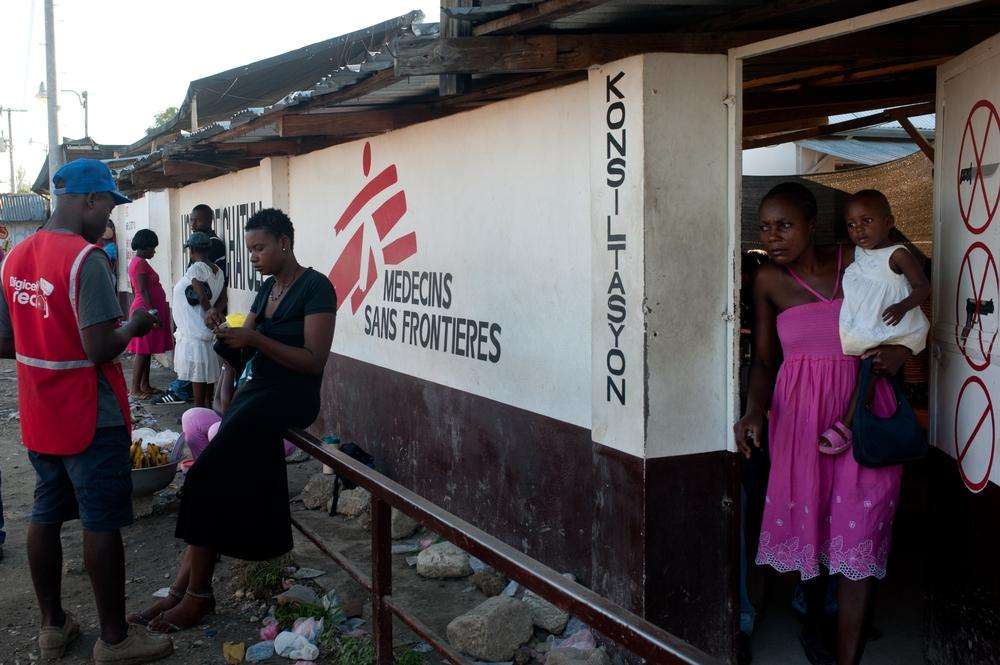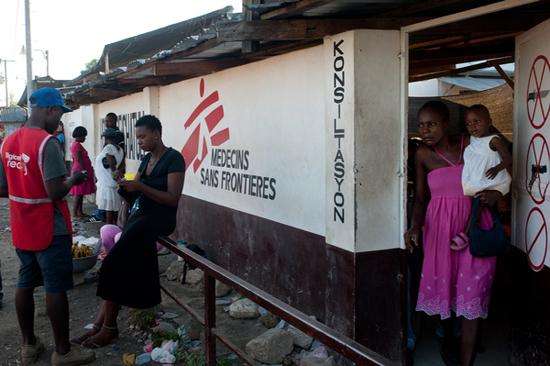Three years after the January 2010 earthquake that battered Haiti, the rebuilding effort continues in fits and starts, especially when it comes to health care.
Three years after a massive earthquake battered the island nation of Haiti on January 12, 2010, the Haitian health care system remains mired in a state of devastation. Doctors Without Borders/Médecins Sans Frontières (MSF), which was present in the country before the earthquake and responded with its largest-ever emergency relief effort, continues to manage four hospitals that were built to replace temporary structures the organization set up immediately after the initial disaster, which destroyed most of the existing health structures in the impact zone.
Tens of thousands of Haitians have received free, high-quality health care at these facilities, but it’s unlikely that MSF will be able to hand over the management of these hospitals to Haitian authorities any time soon. “The transition process is much too slow,” says Joan Arnan, MSF’s head of mission in Haiti. “That’s because Haitian institutions are weak, donors have not kept their promises, and the government and the international community have failed to set clear priorities.”
The inadequate response to the recurrent cholera epidemic—the other catastrophe that first struck Haiti in 2010—signifies the delays in the recovery of the country’s health system. For three years now, cholera has struck Haitians in unforgiving waves. In 2012 alone, MSF treated nearly 23,000 cholera victims in cholera treatment centers in Port-au-Prince and Léogâne. The number of cases increased after Hurricanes Isaac and Sandy hit Haiti last fall, causing sewers to overflow and spreading the bacteria that transmit the disease. The case numbers dropped somewhat last month, but MSF was still treating more than 500 cases each week.
There are deep-rooted reasons for this, which have not yet been addressed. “The majority of the population lacks access to drinking water and proper sanitation, but cholera treatment has still not been properly integrated into the few existing public health facilities,” Arnan explains. In Léogâne, for example, approximately 30 kilometers [18 miles] from Port-au-Prince, several humanitarian organizations fighting the epidemic pulled out when they ran out of funding. This led to a rise in the number of patients admitted to MSF’s treatment unit. The same thing happened in Port-au-Prince, where MSF cholera treatment centers in the Delmas and Carrefour neighborhoods remain the only possibilities for patients and the number of patients has risen as other actors have closed their doors.
Léogâne, the city closest to the earthquake’s epicenter, was largely destroyed by the quake. Today, it resembles a huge construction zone. Most of the people who survived have found new housing, but the health sector has not rebounded as well. The MSF hospital is the only facility in the region offering free care available around the clock in case of emergency.
MSF arrived in Léogâne just after the earthquake and set up a tent hospital to treat quake survivors. This temporary facility was replaced by a building made of shipping containers, which opened in September 2010. In addition to maternity care, the hospital treats medical emergencies and has a surgical unit. Most of the surgeries performed involve women who require Caesarean sections and victims of road accidents. Staff conducts consultations for pregnant women and children under five years of age in another building.
There are, on average, 600 births each month at the facility, with peaks of more than 800. Other medical facilities regularly refer patients to the MSF hospital for treatments ranging from simple labor and delivery cases to complicated ones that require a Caesarean section and, thus, an operating room that functions 24 hours a day.
Although MSF’s goal is to handover these activities to the Ministry of Public Health in Léogâne, the hospital is drawing increasing numbers of patients—some from as far away as Port-au-Prince—a clear indication of the profound lack of adequate care available.
“The hospital fills a gap that existed well before the earthquake,” Arnan says. “Most Haitians did not have access to medical care before January 12, 2010, whether this is because of the lack of available services or because they didn’t have enough money. We came in response to the catastrophe and intended to stay until reconstruction could get underway and the public health facilities could take over. Unfortunately, it’s been three years and almost nothing has changed in terms of access to care.”
Overview of MSF programs in Haiti
MSF launched its first projects in Haiti in 1991, carrying out emergency programs during natural disasters and crisis situations.
Over the 10 months that followed the January 2010 earthquake, MSF teams treated 358,000 patients, performed 16,570 surgeries, and assisted at 15,100 births. More than 80 percent of the $155 million raised in 2010 for MSF emergency operations in Haiti was spent during that period of time.
From late October 2010, MSF responded to the cholera outbreak, treating 170,000 patients in a year at a cost of $45 million.
Today, MSF still manages four hospitals in the earthquake-affected area: the 110-bed reference center for obstetric emergencies that opened in April 2011 in Delmas; a 130-bed trauma hospital that was shifted to Drouillard, close to the slum of Cité Soleil, in May 2011; a 110-bed surgical center that opened in February 2012 in the Tabarre industrial park; and a 160-bed hospital in Léogâne.MSF also treated nearly 23,000 cholera cases in specific treatment centres in Port-au-Prince and Léogâne.
MSF currently employs nearly 2,500 people in Haiti, 95 percent of whom are Haitian.





